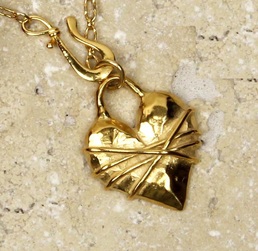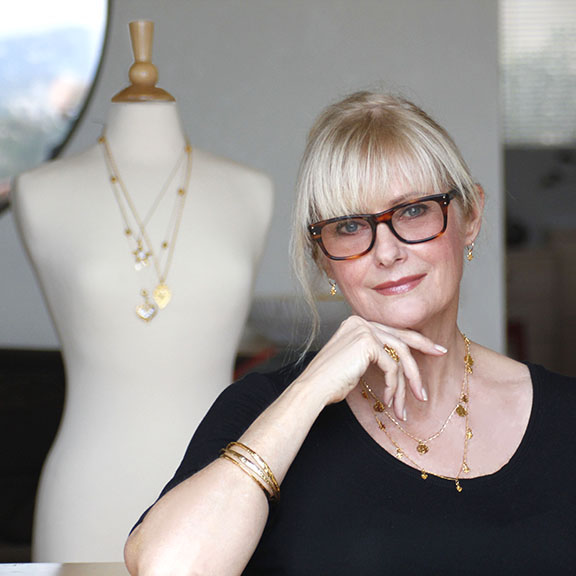
By Mary B Hetz
Typically, many jewelry manufacturers use gold or silver plating over a base metal such as brass, bronze or a combination of alloys. Unless a jewelry item specifically indicates that it is sterling silver, gold vermeil or some other precious metal, it is plated. I offer the highest quality sterling silver and 18K gold vermeil jewelry. Many people don’t know the difference between gold plated, gold filled or vermeil, so here’s a guide to help.
Let’s tackle the plated variety first.
Gold plated jewelry has a very fine layer of the precious metal electromagnetically bonded to it. The thickness of gold (or silver if silver plated) is generally only a few microns thick, so care must be taken not to polish too vigorously or the plating will wear more quickly. Also, it will eventually wear off completely depending on how often it is worn. BTW, the metal underneath the plating is a base metal that must be able to conduct electricity for the bonding process to work. Sometimes these metals contain nickel which many people are allergic to.
The next step up in quality is gold filled.
Gold filled is made by fusing a layer of carat gold to a suitable supporting metal (or alloy) using equipment that carefully controls pressure, heat, and time. Electroplating is not part of this process. The bond produced is a permanent one and the thickness of the gold is a hundred times or more thick than that of gold plate. In fact a gold filled item must contain a fifth (1/20th) of its weight in gold. The chains that I use to go with my gold vermeil pendants and charms are 14 carat gold filled. This means that the outer 1/20th of the piece is 14kt gold. Like solid gold, filled jewelry is tarnish-resistant and safe for most people with sensitive skin. It will not flake or peel and can be treasured for years.
And now for the finale, vermeil. (pronounced vur-may).
Vermeil is produced by coating sterling silver with carat gold. I use 18K. A base metal is never used. Sometimes referred to as gilded silver, vermeil is made using the process of electrolysis — electricity and an acid bath — to attach the gold to sterling. To be considered vermeil, the gold must also be at least 10-carat and be at least 1.5 micrometers thick. This layer of gold is thicker than that applied using the electroplating process and will far outwear a gold plated item.
So there you have it!
All the best,
Mary


 RSS Feed
RSS Feed